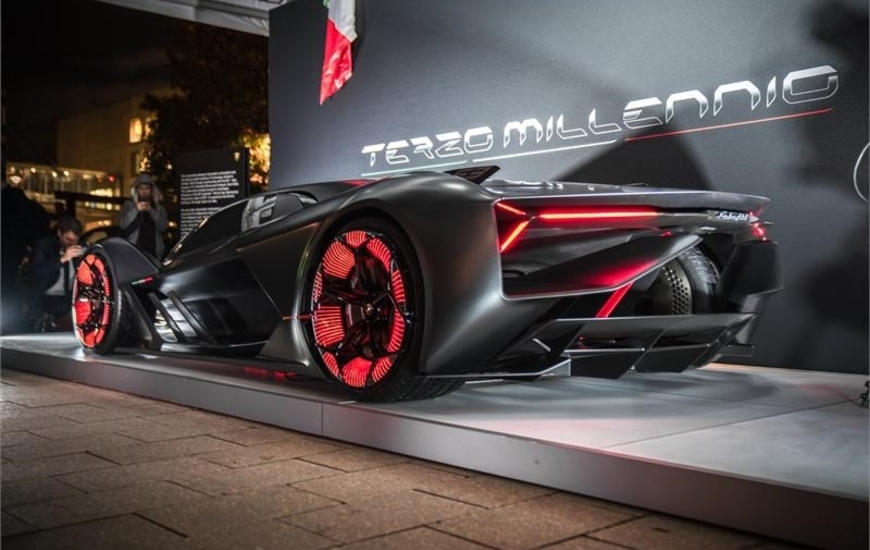Automobili Lamborghini in collaboration with two laboratories of the Massachusetts Institute of Technology marks the first steps of a possible future Lamborghini electric super sports car.
On the occasion of this announcement Lamborghini presents the new design concept “Lamborghini of the Terzo Millennio”. The concept physically imagines design and technology theories of tomorrow, while sustaining the visual intrigue, breath-taking performance and, most importantly, the visceral emotion found in every dimension of a Lamborghini. It is made for future super sports car enthusiasts.
The technological goal of the project is to enable Lamborghini to address the future of the super sports car in five different dimensions: energy storage systems, innovative materials, propulsion system, visionary design, and emotion.
The first two dimensions are conceived together with the two laboratories at the Massachusetts Institute of Technology: the “Dinca Research Lab”, led by Prof. Mircea Dinca, Department of Chemistry and the “Mechanosynthesis Group”, led by Prof. Anastasios John Hart, Department of Mechanical Engineering. The collaboration is substantially financed by Automobili Lamborghini and intended to lead to radical innovation in energy storage systems technology and material science.
Stefano Domenicali, Chairman and Chief Executive Officer of Automobili Lamborghini, says: “Exactly one year ago we have signed an agreement with the MIT-Italy Program at the Massachusetts Institute of Technology which marked the start of a collaboration between two outstanding entities for the creation of a project that intends to write an important page in the future of super sports cars for the third millennium.
The strategy of creating super sports cars with uncompromising performance generates Lamborghini’s motivation to revolutionize the approach to energy storage, moving away from conventional batteries and investigating the potential of supercapacitors to equip the Terzo Millennio.
This is in line with the application of low voltage supercapacitors in the V12 Aventador, which started five years ago. The next logical step is the development of a storage system able to deliver high peak power and regenerate kinetic energy with very limited influence from aging and cycling during the vehicle’s life, and with the ability to symmetrically release and harvest electric power. Thus, the collaboration with Prof. Mircea Dinca is aiming to overcome the limits of today’s technology and close the gap on conventional batteries’ energy density while preserving the high power, symmetrical behavior and the very long lifecycle related to supercapacitor technology.
To support this revolution in energy storage systems, materials and their functions have to change, too. Lamborghini aims to further develop its leadership in the design and production of carbon fiber structures and parts, enhancing its ability to develop features and functions that take lightweight materials to the next level.
For this reason, the cooperation with Prof. John Hart will investigate the new manufacturing routes for carbon fiber materials constituting the bodyshell of the Terzo Millennio, which will also act as an accumulator for energy storage and enable the complete body of the car to be used as a storage system. Prof. Hart says, “we are thrilled to combine our expertise in advanced materials and manufacturing with the vision and support of Automobili Lamborghini, and to realize new concepts that will shape the future of transportation.”
The project also aims to combine the technology to continuously monitor the whole carbon fiber structure, both visible and invisible, with the concept of “self-healing”: the target is to provide the Terzo Millennio with the ability to conduct its own health monitoring to detect cracks and damages in its substructure derived from accidents. In this case a self-repairing process starts via micro-channels filled with healing chemistries, reducing to zero the risks of small cracks propagating further in the carbon fiber structure. This allows further weight reduction with increased use of carbon fiber or the application of CFK to high-fatigue parts.
-

-
14 November 2017




























